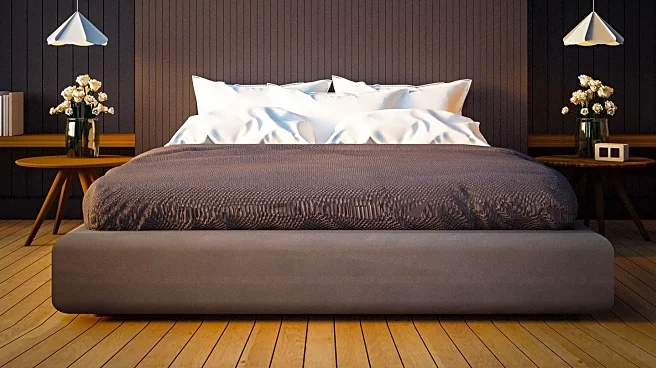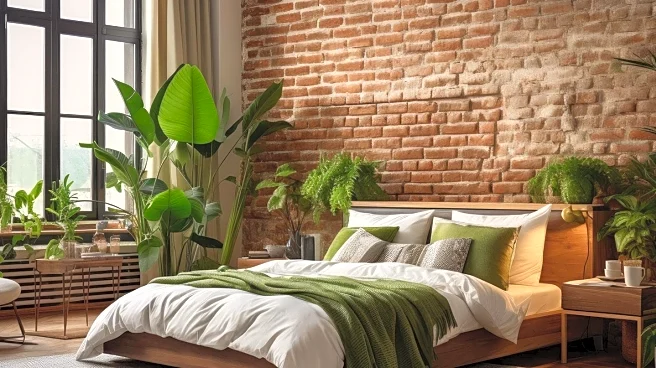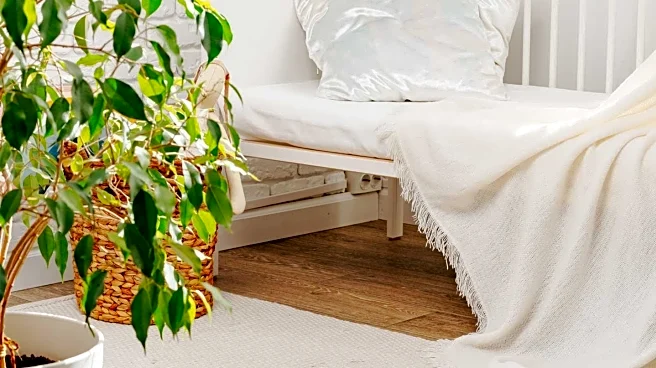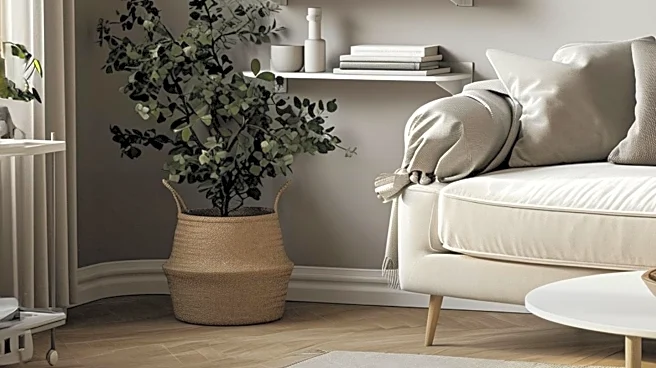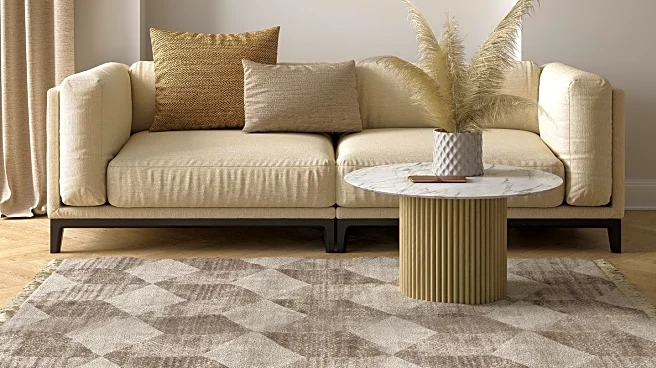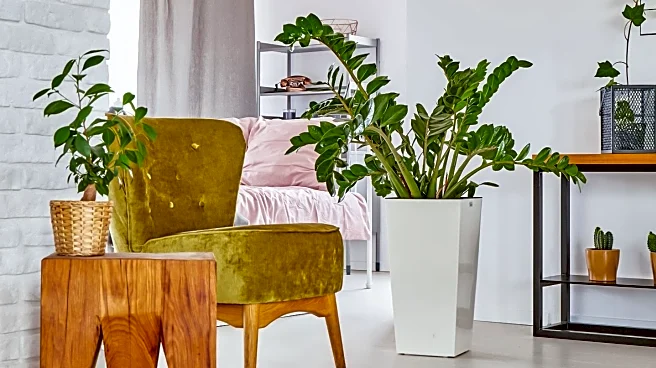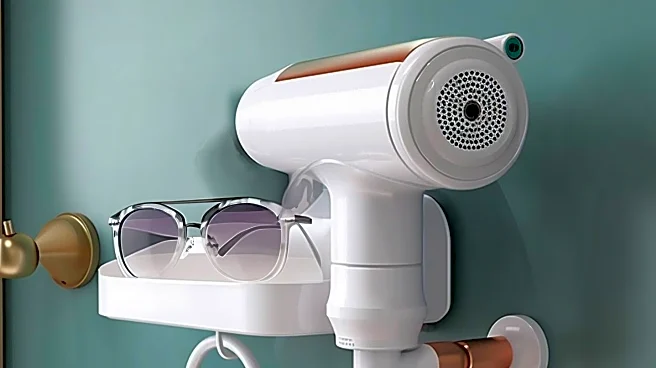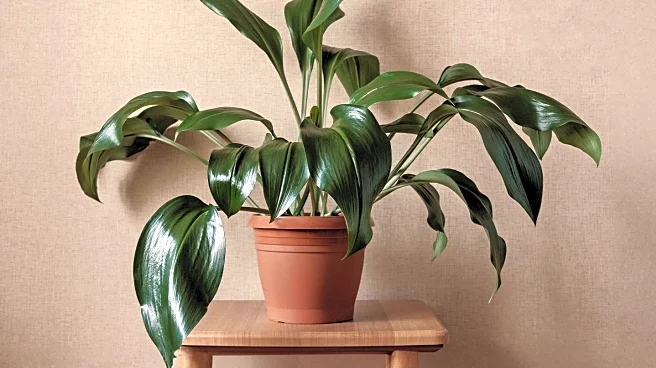What's Happening?
Interior designers are promoting a minimalist approach to bed making, emphasizing the importance of layering and quality materials over traditional duvets and comforters. Heidi Caillier, a designer, suggests using quilts and blankets to create a more inviting and lived-in look, rather than relying on bulky duvets. Katie Monkhouse recommends a simple setup with a large lumbar pillow and a throw to maintain style and comfort. The focus is on creating a bed that feels collected and aesthetically pleasing, with a mix of colors and patterns to add texture and warmth. Designers also stress the importance of a high-quality mattress and topper for ultimate comfort.
Why It's Important?
This shift towards minimalist bed making reflects broader trends in interior design that prioritize simplicity and functionality. By moving away from traditional bedding, consumers can achieve a more personalized and comfortable sleeping environment. The emphasis on quality materials and thoughtful layering can enhance sleep quality, which is crucial for overall well-being. This approach also aligns with sustainable living practices, as it encourages the use of durable and high-quality products that last longer, reducing waste. The trend may influence consumer preferences and drive demand for minimalist and sustainable home products.
What's Next?
As minimalist design continues to gain popularity, it is likely that more consumers will adopt these practices in their homes. Retailers may respond by offering a wider range of minimalist bedding options, including quilts, blankets, and high-quality mattress toppers. Interior design professionals may further explore innovative ways to incorporate minimalism into other aspects of home decor, potentially influencing broader design trends. Additionally, the focus on sustainability and quality could lead to increased collaboration between designers and manufacturers to create eco-friendly products that meet consumer demands.
Beyond the Headlines
The minimalist approach to bed making may also have cultural implications, as it challenges traditional notions of luxury and comfort. By prioritizing simplicity and functionality, this trend encourages a shift towards more mindful consumption and living. It reflects a growing awareness of the impact of consumer choices on the environment and personal well-being. As more people embrace minimalist design, it could lead to a cultural shift towards valuing experiences and quality over quantity, influencing lifestyle choices beyond home decor.

